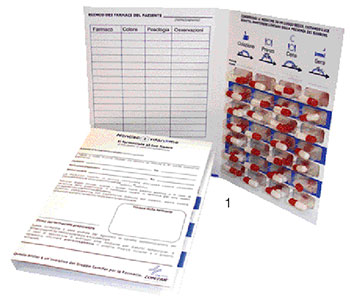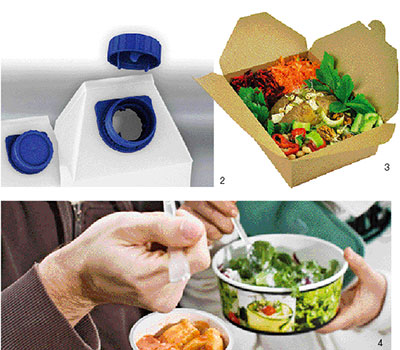Senior proof packaging
TREND The European population is getting older and older, generating a growing demand for special products and services, and suitable packaging. The analyses made by Asia Pulp & Paper and a study carried out by the Italian Pharmaceutical Agency AIFA. By Tristan d’Avezac de Moran
According to the latest Eurostat projections, in the European Union the over sixty-fives in 2060 will constitute a third of the population, a 17.5% increase on 2011. This demographic trend stands as both a challenge and an opportunity for the packaging industry, which finds itself having to tackle new problems and provide the right answers to the same, typically in terms of easy opening, but not only that.
 Intelligent pharmaceuticals. A study of the Italian Pharmaceutical agency AIFA reveals that around 10,000 senior citizens injure themselves each year in opening medicinal products. And this is not the only problem. The “senior proof” pharmaceutical product (but also the childproof product) should allow the attending physician to check whether the patient is assuming the medicine correctly and regularly, as well as being accompanied by more comprehensible info sheets. AIFA has commissioned some dispenser projects that respect these needs and highlights, among the good examples of possible solutions, the cardboard blister with incorporated microchip that registers the time and date the tablet is taken and that emits an acoustic signal when the subsequent tablet needs to be taken (1).
Intelligent pharmaceuticals. A study of the Italian Pharmaceutical agency AIFA reveals that around 10,000 senior citizens injure themselves each year in opening medicinal products. And this is not the only problem. The “senior proof” pharmaceutical product (but also the childproof product) should allow the attending physician to check whether the patient is assuming the medicine correctly and regularly, as well as being accompanied by more comprehensible info sheets. AIFA has commissioned some dispenser projects that respect these needs and highlights, among the good examples of possible solutions, the cardboard blister with incorporated microchip that registers the time and date the tablet is taken and that emits an acoustic signal when the subsequent tablet needs to be taken (1).
Easy open. From this perspective, creating an easy open pharmaceutical pack is a must as well as an opportunity for differentiation. The challenge, in this case, lies in combining ease of handling with the safety function. Tetra Pak for example has shown it is possible with its HeliCap: a larger than normal top with one-step screw closure, that can be reclosed in a single phase. It is an opening system that is immediately comprehensible, with a seal and ring which breaks without forcing at the first turn of the top, designed for consumers of all ages (2).
Help recycling. The need to exploit packaging at the end of its lifecycle is evermore conditioning both the big international brands as well as designers, oriented towards applying the least possible number of materials and components, as well as favouring multilayers ever simpler to separate (3). That is to say, a good design can help the entire population, and the elderly first and foremost, to improve collection and recycling percentages.
From this prospect, paper - that of the “sustainable” suppliers of course - shows evident advantages: it is light, recyclable and, once used, is entirely biodegradable; the selfsame laminated board, initially penalised due to the difficulty of separating the various layers, is now back in favour thanks to the new recycling technologies.

Not only price…Often the most effective, simplest and safest packaging is already available, but the user industry is reluctant to implement it, aboveall for the need to contain costs. But saving cannot be the only guiding criteria and this is demonstrated by the facts: with the growth of the demand of the over sixty-fives, the inconvenient and less functional products will remain on the store shelves and good packaging will evermore make the difference. Consumers - and not just elderly ones - want quality and service (4) and the competition on the market will be won by the brands that continue to invest and innovate in this direction.
Tristan d’Avezac de Moran
European Director Corporate Affairs
Asia Pulp & Paper (APP)
|
Safeguarding the forests: time for cooperation Asia Pulp & Paper Group (APP) is the largest integrated industrial group in the world, with an overall cellulose, paper and derivate production capacity of 18 million tons and works in Indonesia and China, and commercial outlets in 120 countries. This is why it expresses a great social and environmental responsibility, as well as the merit of a solid commitment, that over time has taken on various stages: most of APP’s facilities have obtained “Chain-of-Custody” certification from SVLK, LEI and PEFC; in June 2012 the group launched the Sustainability Roadmap Vision 2020 and in February 2013 the Forest Conservation Policy (FCP), committing themselves to further improving their performance in terms of environmental impact, safeguarding of biodiversity and the rights of local communities. Now it is relaunching, calling up all the actors that count, institutional or other, aware that to be effective the effort must be coordinated. In occasion of the first report on the results of the Forest Conservation Policy, APP has in fact documented the stop of felling operations in the natural forests along the entire production chain (covering and area of over 2.6 million hectares) and the implementation at territorial level of High Conservation Value and High Carbon Stock environmental safeguarding. But it has also shown that success in the long term demands the involvement of many other Indonesian wood industry stakeholders, and it has appealed to NGOs, governments and companies so that they might collaborate and fight deforestation. Four, and of maximum scope, the priority objectives: a coordinated management of the licences for forest exploitation; a shared and coherent management of the conflicts between the needs of the local community and non-deforestation policies; a multi-sectorial approach to territorial husbandry, that considers the various aspects and provides future prospects; the economic sustainability of the environmental safeguarding policies. |




















